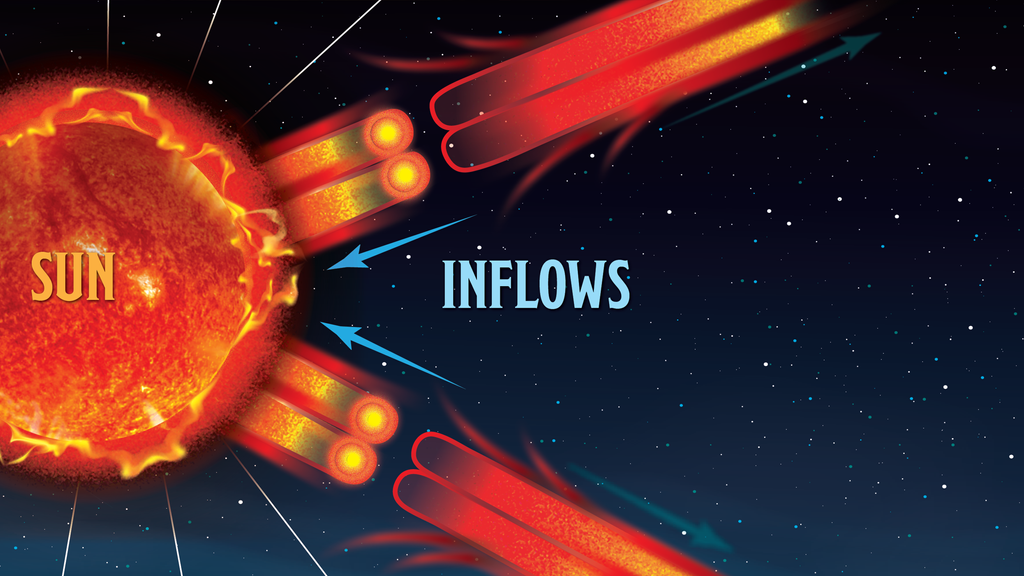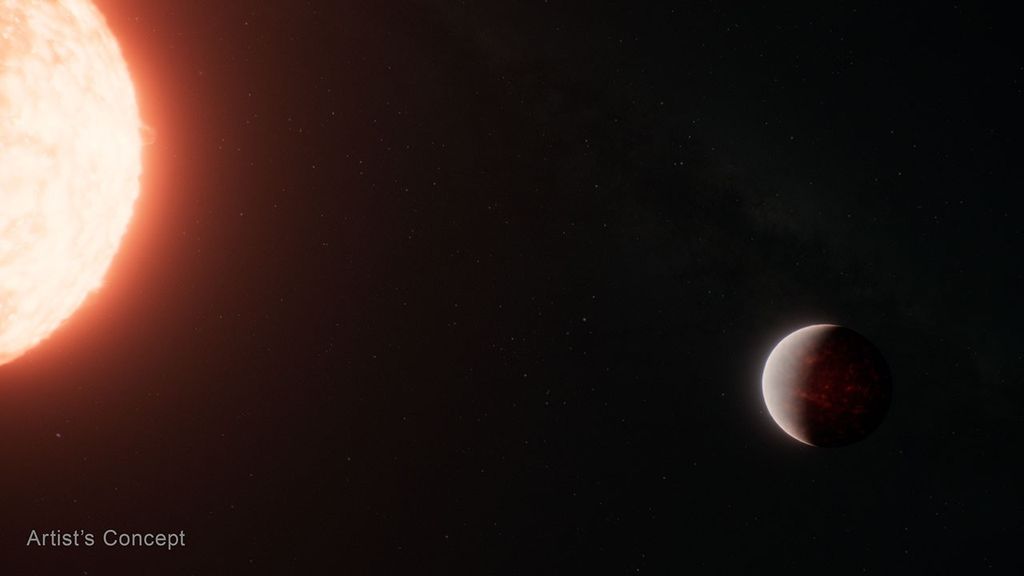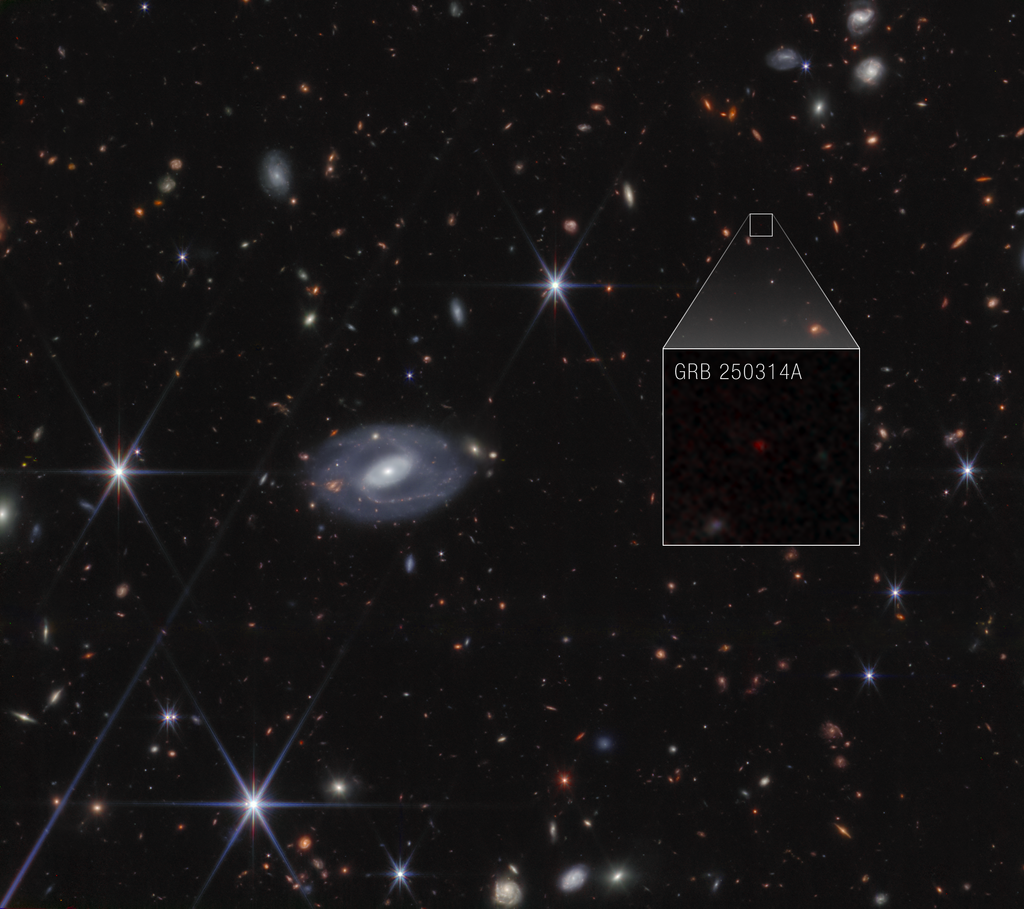1 min read
Galaxies IC 2163 and NGC 2207 (Webb and Hubble Compass Image)
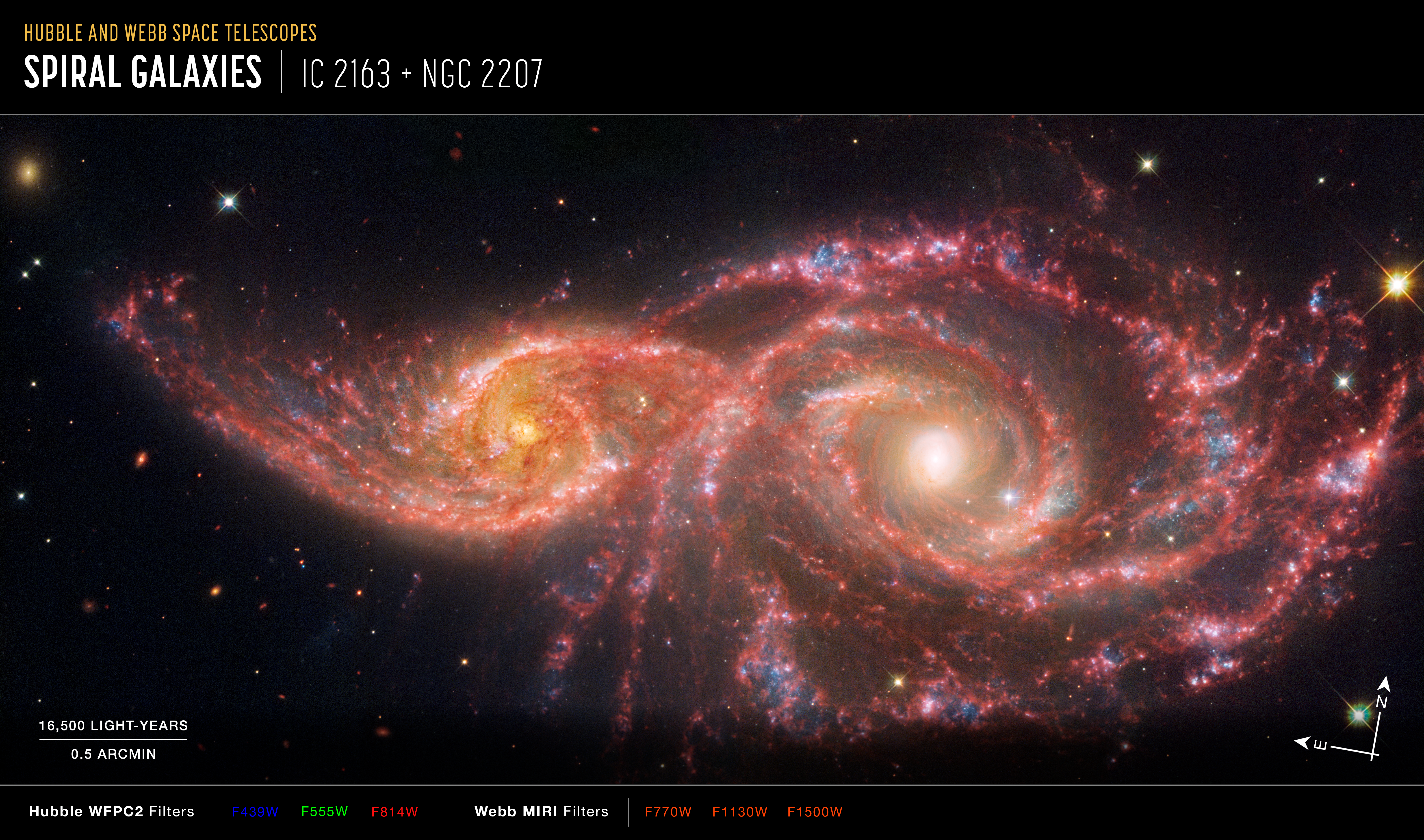
This image of galaxies IC 2163 and NGC 2207, captured by the Hubble and James Webb space telescopes. Hubble’s data are from its Wide Field Planetary Camera 2 (WFPC2). Webb’s data are from its MIRI (Mid-Infrared Instrument).
The image shows a scale bar, compass arrows, and color key for reference.
The scale bar is labeled in light-years along the top, which is the distance that light travels in one Earth-year. One light-year is equal to about 5.88 trillion miles or 9.46 trillion kilometers.
The scale bar is also labeled in arcminutes, which is a measure of angular distance on the sky. One arcsecond is equal an angular measurement of 1/3600 of one degree. There are 60 arcminutes in a degree and 60 arcseconds in an arcminute. (The full Moon has an angular diameter of about 30 arcminutes.) The actual size of an object that covers one arcsecond on the sky depends on its distance from the telescope.
The north and east compass arrows show the orientation of the image on the sky. Note that the relationship between north and east on the sky (as seen from below) is flipped relative to direction arrows on a map of the ground (as seen from above).
This image shows invisible ultraviolet, visible, and mid-infrared wavelengths of light that have been translated into visible-light colors. The color key shows which WFPC2 and MIRI filters were used when collecting the light. The color of each filter name is the visible-light color used to represent the infrared light that passes through that filter.
About the Object
- R.A. PositionR.A. PositionRight ascension – analogous to longitude – is one component of an object's position.06:16:24.9
- Dec. PositionDec. PositionDeclination – analogous to latitude – is one component of an object's position.-21:22:26
- ConstellationConstellationOne of 88 recognized regions of the celestial sphere in which the object appears.Canis Major
- DistanceDistanceThe physical distance from Earth to the astronomical object. Distances within our solar system are usually measured in Astronomical Units (AU). Distances between stars are usually measured in light-years. Interstellar distances can also be measured in parsecs.114 million light-years
- DimensionsDimensionsThe physical size of the object or the apparent angle it subtends on the sky.The image is 4.8 arcminutes across (about 160,000 light-years).
About the Data
- Data DescriptionData DescriptionProposal: A description of the observations, their scientific justification, and the links to the data available in the science archive.
Science Team: The astronomers who planned the observations and analyzed the data. "PI" refers to the Principal Investigator.This image was created with Hubble data from proposal: 6483 (D. Elmegreen) and Webb data from proposal 6553 (M. Garcia Marin). Image Processing: Joseph DePasquale (STScI)
- InstrumentInstrumentThe science instrument used to produce the data.Hubble: WFPC2; Webb: MIRI
- Exposure DatesExposure DatesThe date(s) that the telescope made its observations and the total exposure time.Hubble: May 25, 1996; November 11, 1998; Webb: January 26, February 2, 2024
- FiltersFiltersThe camera filters that were used in the science observations.Hubble: F439W, F555W, F814W; Webb: F770W, F1130W, F1500W
- Object NameObject NameA name or catalog number that astronomers use to identify an astronomical object.IC 2163 and NGC 2207
- Object DescriptionObject DescriptionThe type of astronomical object.Spiral Galaxies
- Release DateOctober 31, 2024
- Science Release‘Blood-Soaked’ Eyes: NASA’s Webb, Hubble Examine Galaxy Pair
- CreditImage: NASA, ESA, CSA, STScI

These images are a composite of separate exposures acquired by the Hubble and James Webb Space Telescopes using Hubble's WFPC2 and Webb's MIRI instruments. Several filters were used to sample wide wavelength ranges. The color results from assigning different hues (colors) to each monochromatic (grayscale) image associated with an individual filter. In this case, the assigned colors are: Blue: F439W Green: F555W Red: F814W, Orange: F770W + F1130W + F1500W
Related Images & Videos
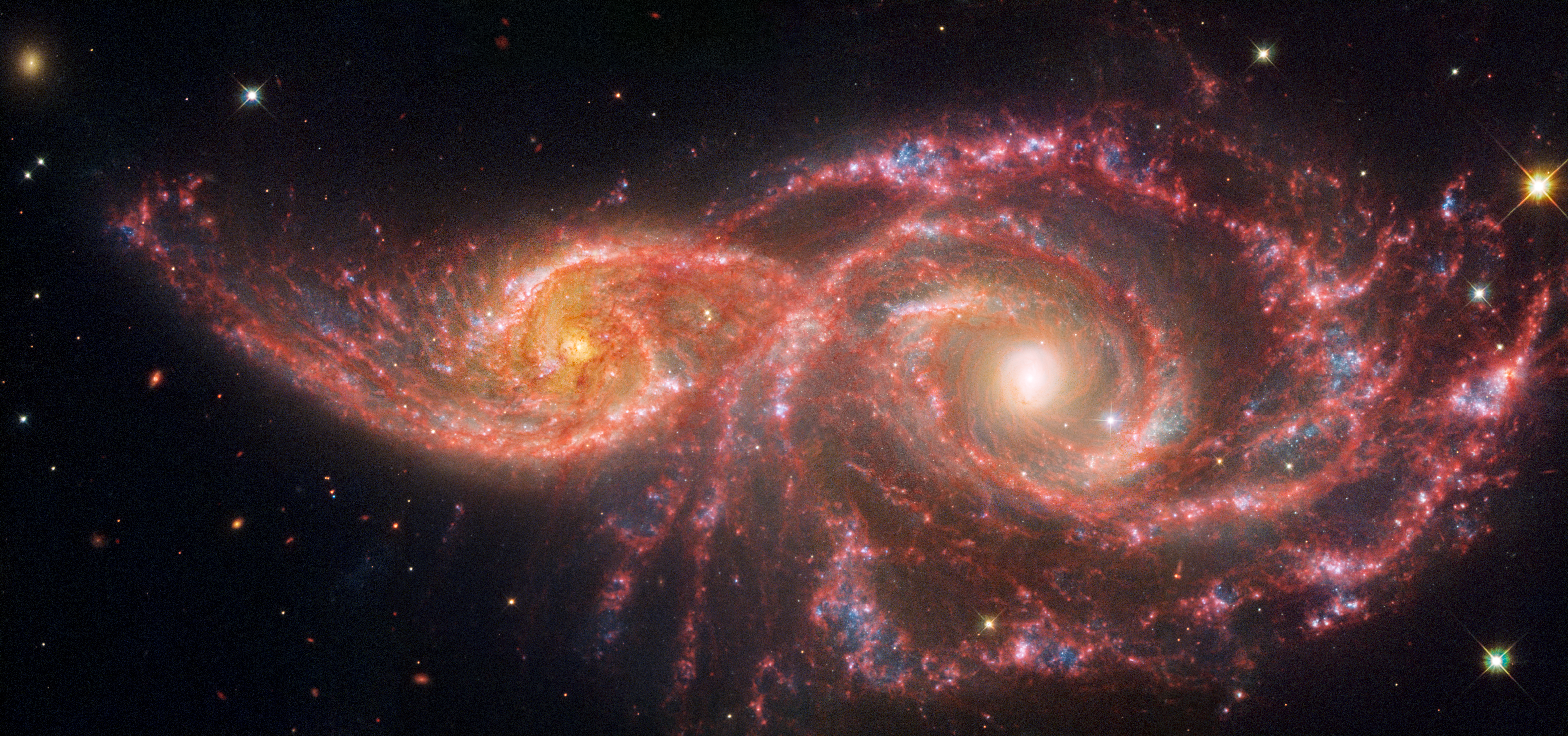
Galaxies IC 2163 and NGC 2207 (Webb and Hubble Image)
The gruesome palette of these galaxies is owed to a mix of mid-infrared light from NASA’s James Webb Space Telescope, and visible and ultraviolet light from NASA’s Hubble Space Telescope. The pair grazed one another millions of years ago. The smaller spiral on the left,...
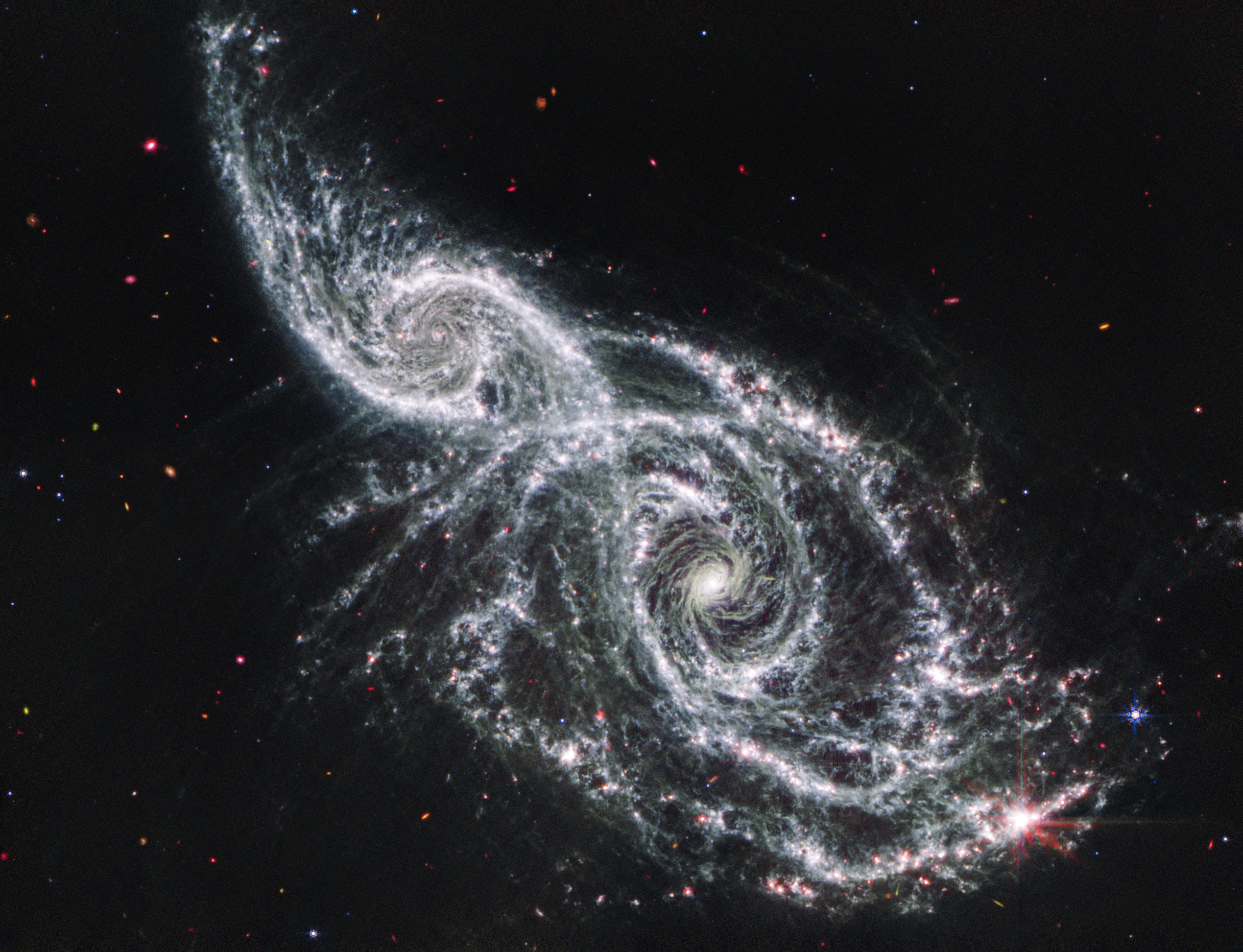
Galaxies IC 2163 and NGC 2207 (Webb MIRI Image)
The James Webb Space Telescope’s mid-infrared image of galaxies IC 2163 and NGC 2207 recalls the iciness of long-dead bones mixed with eerie vapors. Two large luminous “eyes” lie at the galaxies’ cores, and gauzy spiral arms reach out into the vast distances of space. Webb’s...
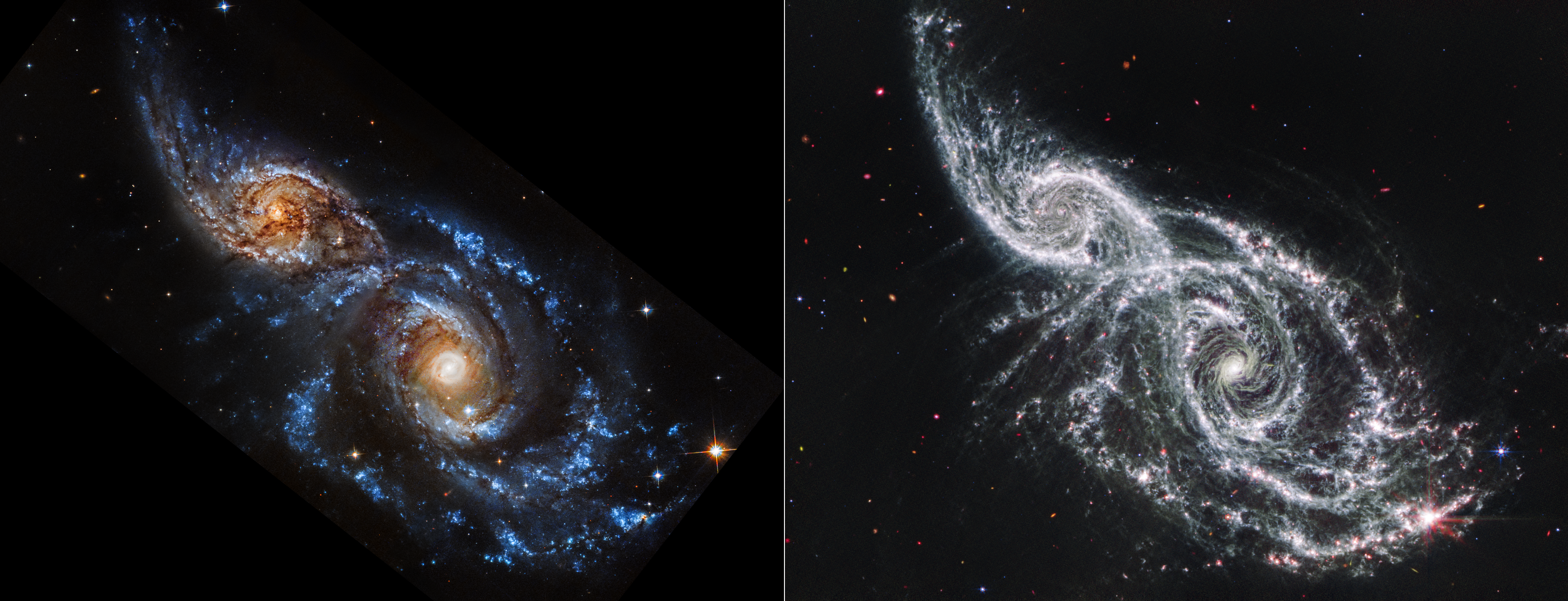
Galaxies IC 2163 and NGC 2207 (Hubble and Webb Images Side by Side)
These are two views of the same scene, each showing two overlapping spiral galaxies, IC 2163 at left and NGC 2207 at right. The Hubble Space Telescope’s ultraviolet- and visible-light observation is at left, and the James Webb Space Telescope’s mid-infrared light observation is...
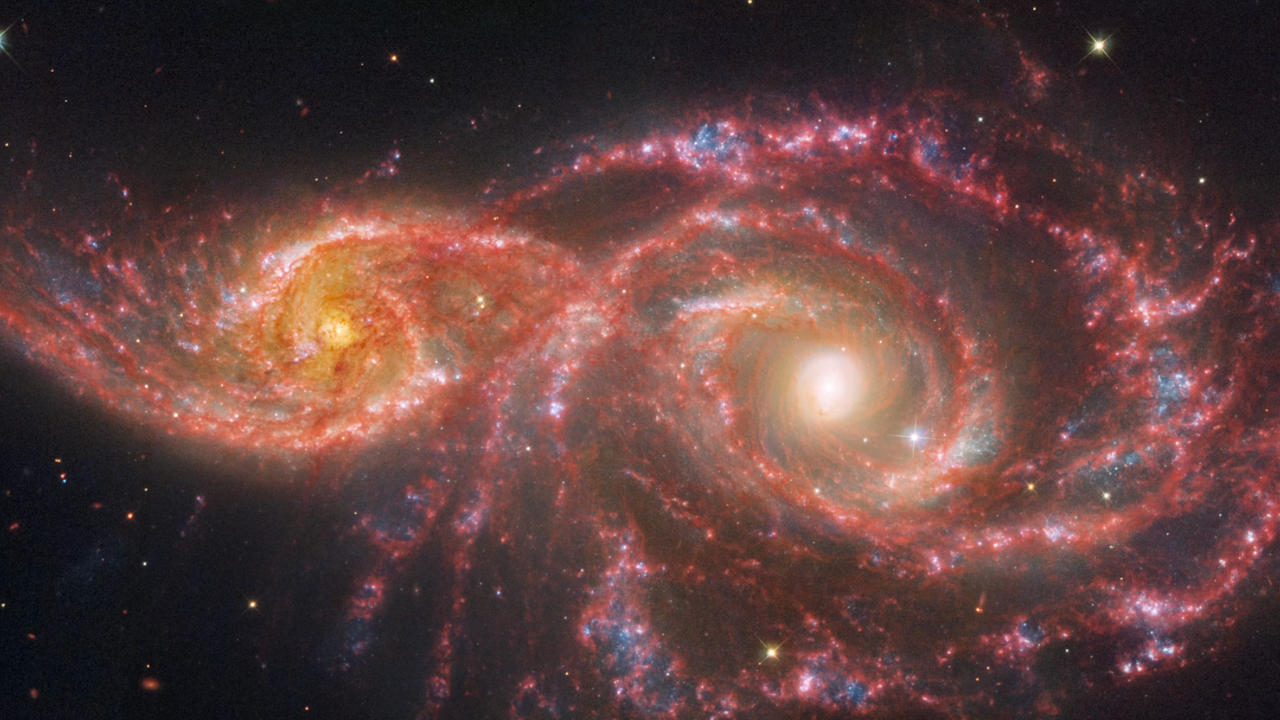
A Tour of IC 2163 and NGC 2207
This video tours a pair of spiral galaxies, IC 2163 at left and NGC 2207 at right, which reside 114 million light-years from Earth. The journey begins and ends on a new image that combines mid-infrared, visible, and ultraviolet light from the James Webb and Hubble space...
Share
Details
Laura Betz
NASA’s Goddard Space Flight Center
Greenbelt, Maryland
laura.e.betz@nasa.gov
NASA, ESA, CSA, STScI









